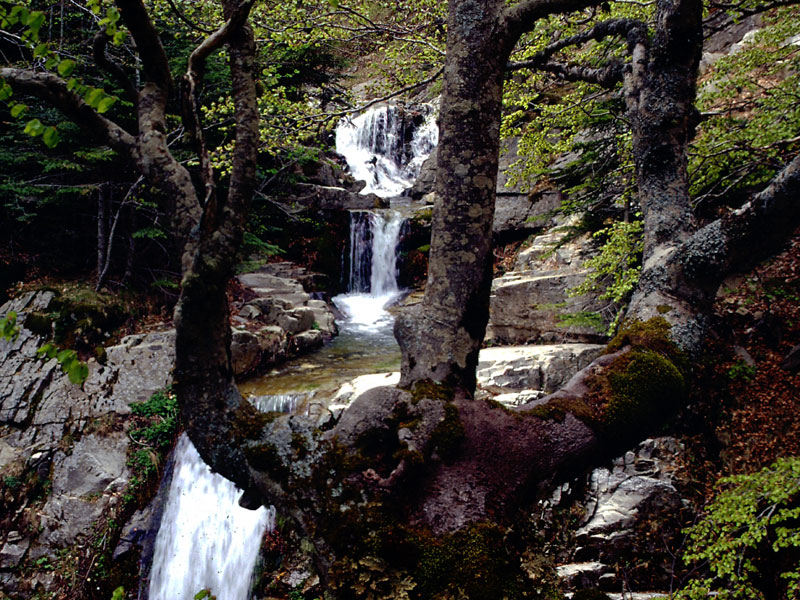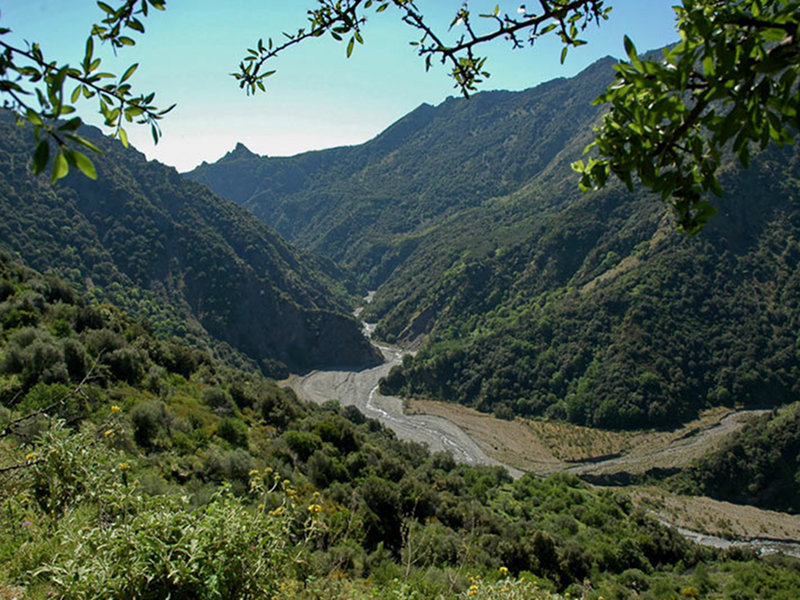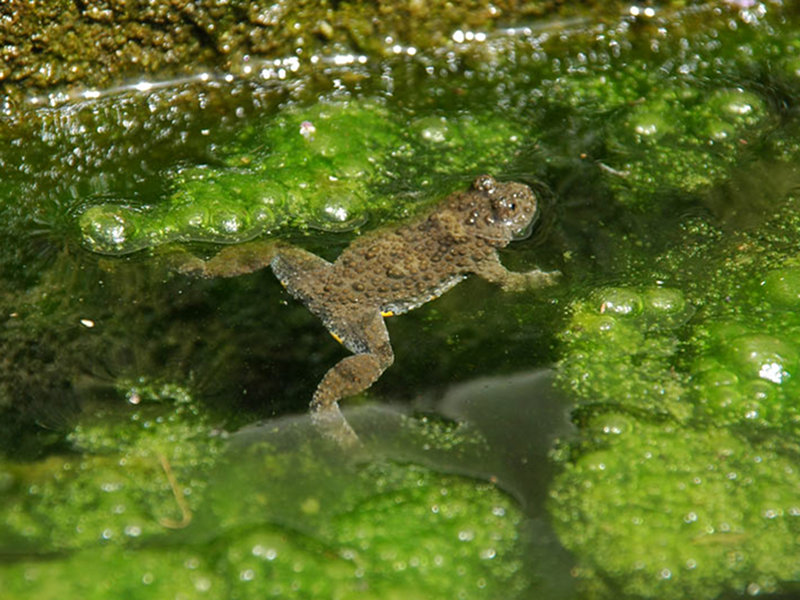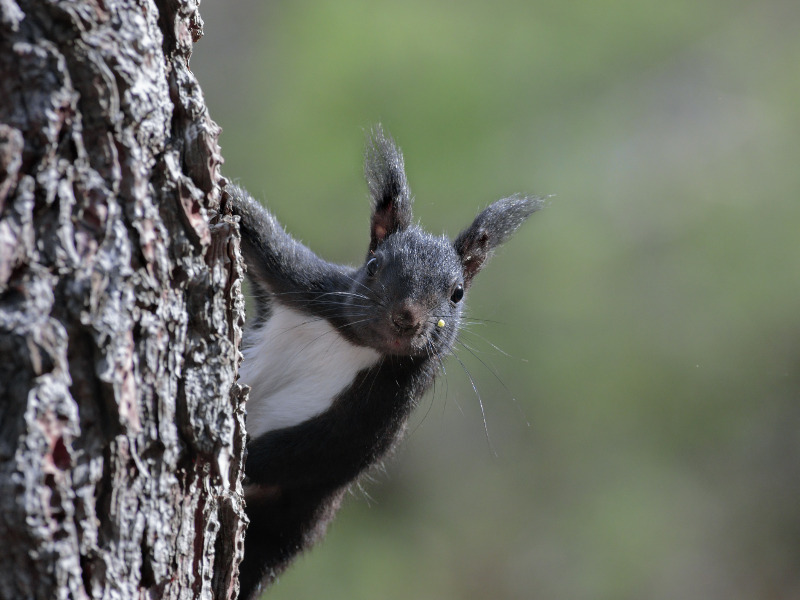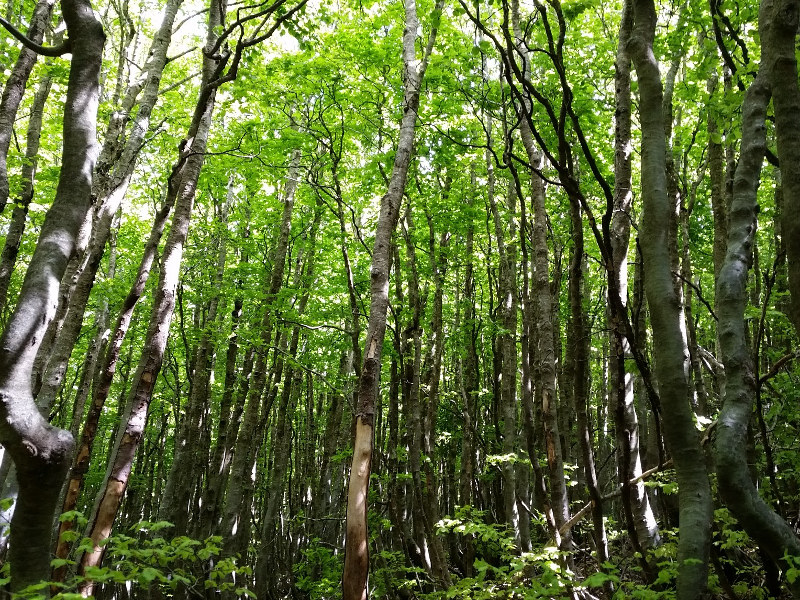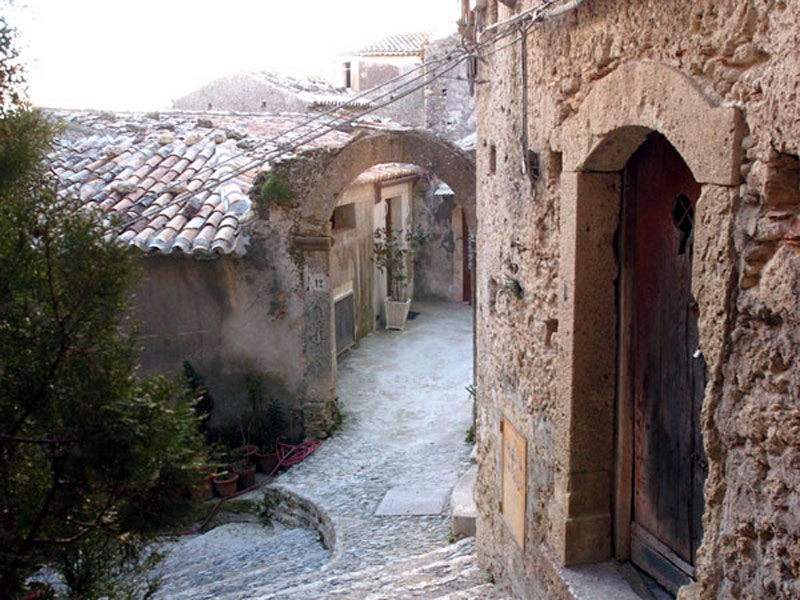Protected Area
Identity Card
- Aspromonte National Park:
- Land Surface Area: 64'544.61 ha
- Protected wildlife: 48 species (Italian text)
- Habitats: 12 types (Italian text)
- Regions: Calabria
- Provinces: Reggio Calabria
- Municipalities: Africo, Antonimina, Bagaladi, Bova, Bruzzano Zeffirio, Canolo, Cardeto, Careri, Ciminà, Cinquefrondi, Cittanova, Condofuri, Cosoleto, Delianuova, Gerace, Mammola, Molochio, Oppido Mamertina, Palizzi, Platì, Reggio Calabria, Roccaforte del Greco, Roghudi, Samo, San Giorgio Morgeto, San Lorenzo, San Luca, San Roberto, Sant'Agata del Bianco, Sant'Eufemia d'Aspromonte, Santa Cristina d'Aspromonte, Santo Stefano in Aspromonte, Scido, Scilla, Sinopoli, Staiti, Varapodio
- Establishment Measures: L 305 28/08/1989 - DPR 14/1/94, DPR 19/7/08
- PA Official List: EUAP0011
- Park Authority: Ente Parco Nazionale dell'Aspromonte
- Further managed Protected Areas:
- Zona di Protezione Speciale Costa Viola
- Zona Speciale di Conservazione Canolo Nuovo, Zomaro, Zillastro
- Zona Speciale di Conservazione Contrada Gornelle
- Zona Speciale di Conservazione Contrada Scala
- Zona Speciale di Conservazione Fiumara Amendolea (incluso Roghudi, Chorio e Rota Greco)
- Zona Speciale di Conservazione Fiumara Buonamico
- Zona Speciale di Conservazione Fiumara Laverde
- Zona Speciale di Conservazione Montalto
- Zona Speciale di Conservazione Monte Basilicò - Torrente Listi
- Zona Speciale di Conservazione Monte Campanaro
- Zona Speciale di Conservazione Monte Fistocchio e Monte Scorda
- Zona Speciale di Conservazione Monte Tre Pizzi
- Zona Speciale di Conservazione Piani di Zervò
- Zona Speciale di Conservazione Piano Abbruschiato
- Zona Speciale di Conservazione Pietra Cappa - Pietra Lunga - Pietra Castello
- Zona Speciale di Conservazione Serro d'Ustra e Fiumara Butrano
- Zona Speciale di Conservazione Torrente Ferraina
- Zona Speciale di Conservazione Torrente Menta
- Zona Speciale di Conservazione Torrente Vasi
- Zona Speciale di Conservazione Vallata del Novito e Monte Mutolo
- Zona Speciale di Conservazione Vallone Cerasella
- Zona Speciale di Conservazione Vallone Fusolano (Cinquefrondi)
- Geoparco Aspromonte
A Great Environmental Heritage
In the past, the forests covered most of the Earth. Today, only a small
part of them has been preserved, because of man's need of wood and of
spaces dedicated to agriculture.
However, woods are essential for
the environment: they produce oxygen, offer shelter to many animal
species, and enrich the landscape. Moreover, their presence is very
important on the mountains, where the rain-water, if not stopped by
wood vegetation, can cause washing away and landslides, sometimes also
damaging the valleys below.
The elements which can give life to a forest are four: first of all soil and climate, then vegetation and fauna.
The
plants are nourished by the ground. Also the most fertile ground
originates from the rocky surface, which has been shaped during the
centuries by atmospheric and chemical agents, and by vegetation and
fauna which began to give life to it.
Not only the wood needs the
ground to grow, but also the ground and the whole ecosystem need the
forest in order to protect itself.
The vegetal species can vary according to the different kind of ground
and of climate. In the same way, the plants influence the ground and
the climate: just think about the lower temperatures and the higher
level of humidity you can find in a wood. Therefore, the factors
determining a wood can change and influence one the other; in this way,
they create a constantly unstable balance.
In Aspromonte there are many forests: they cover about 40,000 hectares and reach the highest mountains.
A Spectacular Nature
The Massif of the Aspromonte, situated between the Ionian and the
Tyrrhenian Sea, has several mountains reaching 2,000 meters (the
Montalto is the highest one: 1,955m). From these summits it is possible
to see the Etna and the Aeolian Islands. The steep rocky walls surround
narrow and suggestive valleys animated by impetuous streams which, on
their way, collect the water of wonderful waterfalls.
Between the
sea and the massif, only a narrow stretch of land remains, which is in
some points interrupted by some overhanging promontories (Mt. Sant'Elia
is the most spectacular one). Sometimes this piece of land can widen,
creating for example the Plain of Gioia Tauro, which with its 400 Km2
is the widest plain in Calabria.
The lake Rumia and the lake Costantino - the latter originating from a
landslide which blocked the course of a stream - offer us suggestive
landscapes near Gambarie and in the valley of the Bonamico.
Upstream the village of San Luca, it is possible to see many monolithes
emerging from thick ilex groves; it is the valley of the Big Stones:
Pietra Cappa, Pietra Castello, Pietra Lunga, etc.
Near Natile, because of rupestrian settlements, the landscape reminds
us of Cappadocia. In the northern-western area of Aspromonte, the
plains of Zervò and Zomaro are worth a visit.
Huge
woods are one of the greatest naturalistic heritage of Aspromonte,
since the vegetation includes all the typical plants of the
Mediterranean basin. Also the fauna has the same naturalistic value.
There are widespread and rare species, despite some of them have
disappeared some years ago.
Fauna
The Aspromonte National Park has an extraordinary wildlife, thanks to the environmental variety of the territory. The dense vegetation and the predominantly Mediterranean climate foster the presence of many animal species, that find in Aspromonte their ideal habitat.
Flora
The natural territory of the Aspromonte Park has an indented morphology which, moving from the Tyrrhenian to the Ionian coast of Calabria, produce a vaste array of plant species and a great biodiversity, thanks also to the favourable climate conditions.
The Richness of the Traditions
Not only nature, but also man's activities transform the Aspromonte
into a unique place. In particular, the flourishing craftsmanship has
handed on to present times ancient techniques and knowledge.
Many
agricultural and pastoral tools are made of wood (cheese moulds,
collars, spoons, etc.) and also musical instruments like tambourines
and bagpipes. As far as pipes are concerned, they are obtained from the
root of the arboreal heather of Calabria, which is considered the most
precious wood in the world for this aim. Some bowls are sold to Italian
and foreign factories, mainly English. They create pipes destined be
exported under different trade-marks.
In
Greek countries and most of all in Samo, where a characteristic dialect
similar to the ancient Greek is spoken, the weaving activity gives life
to colored Byzantine-styled fabrics, called "pezzare", and to very
resistant broom blankets. In Gerace, the production of laces made with
crochet work and with lace pillow is particularly interesting.
Gerace is also an important center for ceramics. There is a great
demand for this kind of goods: Roman and Greek amphoras, watering cans,
whistles, pine-cones for gardens, etc.
Also religiosity and folklore are famous beyond the borders of the
Calabria region. In Aspromonte there are many monasteries and
sanctuaries, among which the one of Polsi, the most known: thousands of
pilgrims go there every year to prey the Madonna della Montagna. After
the visit, there is usually a great feast made of rich lunches and
popular dances.





